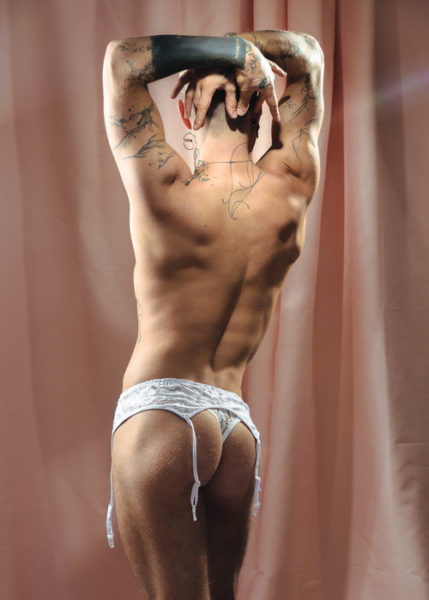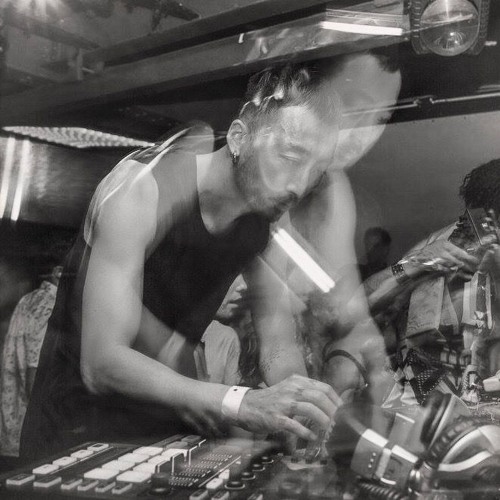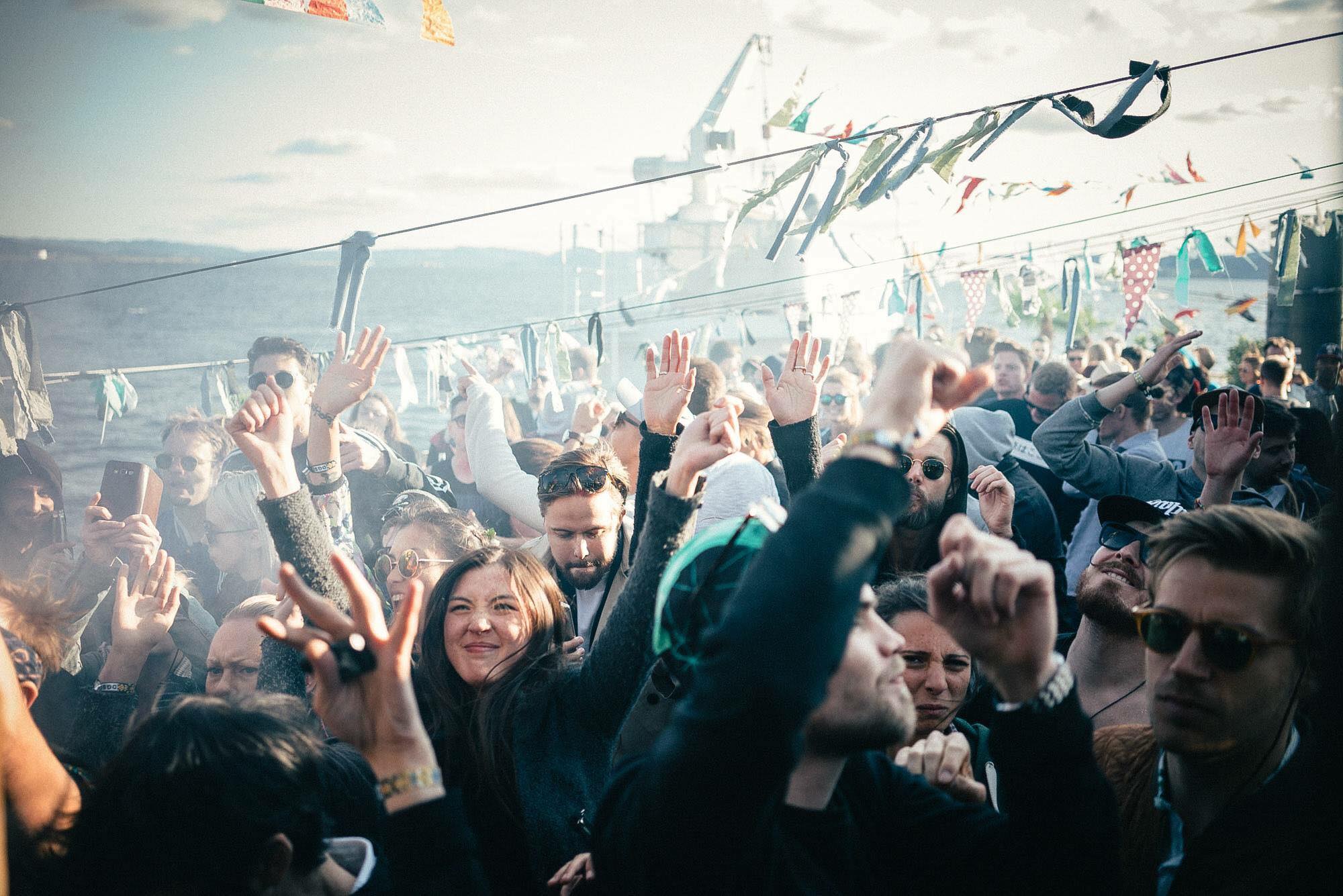Type in the term “Queer Art” and the first result is almost always in the form of a question. A fairly new development in the lexicon of modern art theory, the term “Queer” was only really introduced to the glossary of terms in the 1980’s – even though it now refers to art made before that time. Out of all the definitions I prefer the succinctness of the Tate’s: “Art of homosexual or lesbian imagery that is based around the issues that evolved out of the gender and identity politics of the 1980s.” It sums it up as art created and/or about LGBTQI socio-political issues. There’s either a visual aesthetic or a conceptual premise tied up with the artist’s identity that sets it apart and obvious examples would include Nan Goldin and Robert Mapplethorpe. Today there’s a clear distinction in queer art and for an up-and-coming queer artist like

Phillip Prokopiou, the line of separation for his work is obvious and welcomed. A London-based photographer, Prokopiou together with his partner and set designer Panayiotis Pimenides takes portrait photos of prominent figures active in London’s queer community. “Informed by their love of high-camp, kitsch conviction and the sub-cultural landscape of London”, Prokopiou’s work communicates queer identity through highly stylised photographs that offer very little ambiguity around their overtly queer themes.
Supplant the term to music and artists like Arca, Sophie, Kalela, St. Vincent, Peaches, Fever Ray, Mykki Blanco and Cakes Da Killa pop up in your search engine, LGBTQI artists whose music and identity are all linked to a queer cultural scene and history. Lyrics that are “largely about empowerment, same-sex relationships, love, acceptance, freedom, gay pride and the courage to ‘come out’ to the general public”, (Wikipedia) set them apart from other musicians in a very obvious way. There’s a literal interpretation there that can be communicated through lyrics from pop acts like St Vincent and Kelela and for the more avant garde pop artist like Arca and Fever Ray, there’s a performance aspect that often accompanies it. In Fever Ray’s live production for her latest album Plunge, there’s an androgynous quality to the costumes on stage, that like her voice on her records, plays and confronts issues around gender and identity politics. A female backup singer wearing a male muscle suit and Dreijer herself in a formless, padded suit donning the tagline: “I love Spanish Girls” are obvious visual cues that bolster the queer themes in her music and lyrics, which takes one step further on her current tour. In a recent show in Oslo by appointment of the artist, the venue, Sentrum Scene was also obliged to put up signs encouraging a gender neutrality between their facilities, creating an entirely queer environment that went beyond just the performance and the music.
For a pop artist like Fever Ray there’s an obvious queer identity that follows her from the recorded music, the presentation right through to the performance. There is absolutely no ambiguity to the queer aspects of the artist and her music, but how do you communicate the same ideas through music with little or no literal interpretation available, in a gender-neutral context, and a complex artistic identity that’s closer to facilitator than artist, i.e what does queer suggest in the context of a modern club setting and a DJ set?
“I think queerness is to break out of the restrictions”, says Timothy Wang (TWANG). A gay man of Chinese descent, Timothy is a London based DJ and prominent figure on the underground queer scene in the UK capital. Although he “didn’t plan to be queer DJ” he is one, regularly playing queer events around the city. There’s an obvious queer context in which he, as a DJ, finds himself when he plays an event like Kaos or Transister, but as these events place more emphasis on being mixed events and the music being played is often made by straight white men, how is he still able to communicate that queer identity? “I tend to like a sound that is different and weird, even maybe a bit annoying” replies Timmy. “I like to challenge people on the dance floor a bit, to invite people them to think when I play, that’s the attitude. That’s why I love Techno music, it’s very diverse, strange and wonderful!”
Det Gode Selskab and Oslo DJ, Terje Dybdahl (Tod Louie) prefers a more literal interpretation through his selections. “I keep on dropping some diva House or Trulz & Robin’s ‘Gay Boys’. When the floor hears the hard-hitting electro groove and the voice, ‘I see gay boys’, it’s always fun to see people’s reactions. Sometimes they are a bit hesitant at first, but it always puts the floor on fire.” Terje identifies as a queer DJ and aside from running Det Gode Selskab, he also hosts a new queer-orientated night in Oslo with Mange Debauch called Everysome. Everysome is an all inclusive night for “straight, bi, gay, cis, trans, non binary or however you identify” explains Terje and much like like Kaoss and Transister, it is a queer event for a mixed audience. Like Det Gode Selskab, which “definitely has a gay following”, Everysome is essentially a mixed event. “I prefer a mixed atmosphere, rather than a straight or gay atmosphere”, says Terje. “It’s simply more fun and interesting.” But not every DJ agrees with that sentiment entirely.
For Terre Thaemlitz (DJ Sprinkles) the mixed audience poses a problem. In a conversation with Maya Bouldry-Morrison (Octo Octa) on Electronic Beats Terre suggests that these spaces are “‘mixed’ within certain heteronormative parameters” and the atmosphere of these spaces are essentially “very straight”. Thaemlitz feels that “if you are going to be out in these mixed spaces as something other than straight, then you will only be tolerated if you are out within certain heteronormative parameters, like a certain type of accepted gayness or a certain type of accepted transness—usually one that panders to straight audiences, or is comprehensible and morally acceptable to them.” Although Thaemlitz rose to prominence through Manhattan’s underground queer scene in the nineties, he is more likely to play for predominantly straight, white European audiences today as a high-profile touring DJ. Terre is very critical about the heteronormative aspects of queer culture that can go from gay men adopting a traditional family arrangement to the largely heterosexual audiences she plays for in Europe and often approaches it in his music and his more literal video works like Deproduction.
 It seems however that opinion is divided between a high profile DJ like Thaemlitz and the DJs that still work at a local, subcultural level. While a DJ like Thaemlitz is openly opposed to mixed spaces as it heteronormalises the queer aspects of the culture, a younger generation of DJs like Terje Dybdahl and Timothy Wang are embracing and indeed welcoming the mixed orientation of the audiences. As more previously rigidly queer spaces and events like Kaos, overwhelmingly welcome mixed audiences, albeit retaining their queer identity, it appears that a mixed philosophy is becoming the acceptable norm. My first thought was that this might be predicated on a regional aspect since in Europe and the UK this music and its culture was first adopted by a heterosexual audience, but this doesn’t really concur with what US DJ Jason Kendig from Honey Soundsystem told me last year during an interview for Jæger’s blog. He put emphasis on the fact that he and the soundsystem’s “first experiences in dance music were not necessarily in queer spaces”.
It seems however that opinion is divided between a high profile DJ like Thaemlitz and the DJs that still work at a local, subcultural level. While a DJ like Thaemlitz is openly opposed to mixed spaces as it heteronormalises the queer aspects of the culture, a younger generation of DJs like Terje Dybdahl and Timothy Wang are embracing and indeed welcoming the mixed orientation of the audiences. As more previously rigidly queer spaces and events like Kaos, overwhelmingly welcome mixed audiences, albeit retaining their queer identity, it appears that a mixed philosophy is becoming the acceptable norm. My first thought was that this might be predicated on a regional aspect since in Europe and the UK this music and its culture was first adopted by a heterosexual audience, but this doesn’t really concur with what US DJ Jason Kendig from Honey Soundsystem told me last year during an interview for Jæger’s blog. He put emphasis on the fact that he and the soundsystem’s “first experiences in dance music were not necessarily in queer spaces”.
In the interview the DJ, label owner and producer laid out his reasons for seeking gender neutral spaces and events as such: “For myself as a teenager, when I was finding myself at raves in Detroit, it was about freedom of anonymity, that I didn’t have to worry about being harassed.” Like Terre Thaemlitz, Honey Soundsystem play for predominantly straight white audiences when they play in Europe. Putting on their own events in San Francisco and Chicago, Honey Soundsystem are able to retain that all important queer context, but when they appear as DJs in a place like Jæger, context is an element they are not able to control so how do they communicate the queer history and ideology through a DJ set to these audiences? “You have to do it through the tracks.”, says Jason. “You have to throw a lot of energy into a track that you feel that’s gonna explain a little bit of the history of where you are coming from.”
Energy is also important to Terje Dybdal. At Det Gode Selskab Terje might often play for an entirely straight audience on a Sunday night in Jæger’s basement and besides the considered selections, Terje believes there’s a certain “energy” he has to bring to the booth when playing for these audiences that set him aside from straight DJ’s he might play with on a night. As a promoter, he can produce queer specific events through Det Gode Selskab, like their upcoming Skeiv Natt, and booking DJs like Eris Drew, a queer DJ from Chicago’s Smart bar to relay the queer aspects of his identity, but when it’s just him and the audience at a normal residency night, there’s something more abstract at play.
Unlike a gay club with a queer aesthetic or codified as such, a night like Det Gode Selskab or a DJ collective like Honey Soundsystem don’t have that literal language that follows them into the booth. Without a strong visual code, being queer is something they have to bolster through their biographies. The issue arises when these are not always universally obvious and what then, how can you possibility communicate something of your queer identity to an uninformed audience, how do you get through to the fist-pumping bros? There’s only so much people like Honey Soundsystem can do outside of a conceptual context and often what they’re trying to say gets completely lost in translation. Jason believes that “there are some rigid formats to fit into as touring DJs” that won’t allow them to place emphasis on their own queer history and sometimes “it’s just the nature of the beast”.
In Europe especially, where this music has always enjoyed a rather large white heterosexual audience this is a serious problem for some queer DJs. In a recent interview with Channel 4 news Honey Dijon proclaims that “when Frankie Knuckles died the last, great gay black DJ died with him” as if to emphasise the degree to which this music is dominated today by white heterosexual cis men and how its queer roots have become distorted. Dijon, like Thaemlitz is critical about the hetero nature of this music and its culture today. Again it seems that opinion is divided and in the case of Timothy Wang it might even have detrimental effect on him as a DJ to be defined as strictly as such.

“I obviously love being associated with queer culture, but I wouldn’t want it be the only reason people come to my gig.” Terje Dybdahl shares this more open sentiment: “House and electronic music does not judge, it’s open and inclusive. It’s about everyone coming together and dancing”. Although Timothy and Terje identify as queer DJs, their approach is not one of isolation within a strictly coded scene or environment, but rather one that can be fluid between environments. Timothy extends this ideology to the music too preferring the Techno genre for its more universal nature than perhaps Disco or House. Techno, a style of music that’s always enjoyed a predominantly hetero male audience and artistic identity, with roots in Black Detroit and recently the music du jour for places like Kaos, offers very little in the way of strict gender codes. “I would never discriminate or favour music because who made them based on their sexual identity”, says Timothy by way of explanation “otherwise I will be just as bad as homophobes”.
Terre Thaemlitz relationship with the music is more complicated than that and she went into particular detail about it in a recent Q&A session on our blog. “Growing up as a queer in the US countryside, I had limited access to different styles of music. So my sense of how certain genres or songs took on queered meanings was grounded in the fact that I was mostly stuck listening to the same shit music cherished by the assholes fagbashing me.” Like Timothy Wang’s musical selections, there’s nothing really distinctly “queer” in the music he would listen to growing up so “it wasn’t about an ‘authentically queer sound’, but rather a ‘queered relationship to mainstream sound’”. Today Terre Theamlitz largely plays his own music in his DJ sets negating this all together and allowing him to communicate something identifiably queer through either a sample or a vocal line. For a DJ like Timothy Wang however who relies largely on playing Techno made by other artists where an overtly queer identity does not always exist, he has to communicate something queer in a similar way to Terre’s early experiences; i.e finding a queered relationship with the sound which in Timothy’s case is finding something to challenge the dance floor with and that all comes down to an attitude.
So what does queer suggest in the modern club setting in a Dj set? It can be something as obvious as tracks selection or the identity of the DJ, or something as abstract as a mood, but what it boils down to is an attitude. Unlike the queer visual- or pop artist that has a broad media palette through which s/he could communicate their queer identity in various literal languages, the DJ is often just limited to one, a very abstract musical language and thus they have to wholly embody the idea of queer, and I’d suggest even more so than an artist. Ask these DJs if they think of themselves as queer, and without hesitation you’ll get a resounding yes. The history of queer culture is intrinsically intertwined in who they are as a person and it’s communicated through everything they do and there’s no ambivalence about it to them. It’s their artistic identity and it doesn’t need context or some literal interpretation to prevail, it’s truly independent of the listener and able to freely engage with people on a universal level or at more personal level for those able, and informed enough to interpret it.

